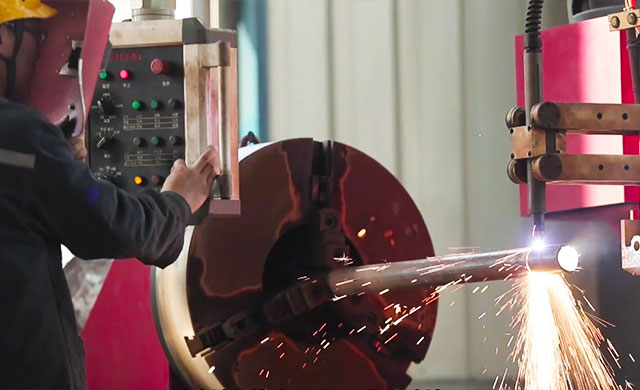
Aug . 05, 2024 03:06
Back to list
Ensuring Stable Pressure Control with Advanced Pressure Regulation Technology for Optimal System Performance
Understanding Pressure Regulating Devices Essential Components in Fluid Systems
Pressure regulating devices play a crucial role in various industrial applications, ensuring that the pressure of fluids remains within safe and efficient limits. These devices are engineered to control the pressure of gases or liquids, maintaining a consistent output pressure regardless of the fluctuations in the input pressure or flow rate. This article delves into the significance of pressure regulating devices, their types, applications, and the principles behind their operation.
What is a Pressure Regulating Device?
A pressure regulating device, commonly known as a pressure regulator, is a mechanical device designed to automatically maintain a set outlet pressure. By adjusting the flow of fluids or gases, these devices can compensate for any changes in upstream pressure. They are essential in systems where pressure-sensitive equipment operates, such as boilers, gas supply lines, and pneumatic systems.
Types of Pressure Regulators
Pressure regulators can be categorized based on various criteria, including their operational design and the medium they control
. The main types of pressure regulating devices are as follows1. Mechanical Regulators These are the most common type, working on a spring-loaded mechanism. When the outlet pressure rises above the set point, the diaphragm moves to close the flow, thereby reducing the pressure. Conversely, if the pressure drops, the spring expands, allowing more flow.
2. Electronic Regulators These regulators utilize electronic sensors and controllers to manage pressure more precisely. They are often preferred in applications requiring more sophisticated control, providing real-time adjustments based on feedback from pressure sensors.
3. Back-pressure Regulators These devices maintain pressure upstream of the regulator by allowing excess fluid to escape. They are typically used in process systems where maintaining upstream pressure is critical.
pressure regulating device

4. Dome-loaded Regulators These regulators use gas in a dome to provide additional control over the regulating pressure. They help in applications requiring very stable pressure levels.
Principles of Operation
The operation of pressure regulating devices hinges on principles of hydraulics and mechanics. Most mechanical regulators use a diaphragm, a flexible membrane that reacts to changes in pressure. When fluid enters the regulator, it exerts pressure on the diaphragm, which in turn moves a valve. If the output pressure exceeds the preset limit, the diaphragm closes the valve partially or fully, reducing the flow. Conversely, a drop in pressure allows the valve to open further, enabling more flow.
Electronic regulators incorporate sensors and programmable logic controllers to adjust the output dynamically. They can maintain tighter tolerances than mechanical systems and can be integrated into larger automated systems, enhancing overall operational efficiency.
Applications of Pressure Regulating Devices
Pressure regulators find applications across numerous industries. In the healthcare field, they are vital in regulating oxygen and anesthesia delivery systems. In the oil and gas sector, they ensure safe and efficient pressure levels in pipelines and refineries. Similarly, in manufacturing, regulators maintain necessary pressures for machinery, ensuring productivity and safety.
In HVAC systems, pressure regulators control the flow of refrigerants, optimizing energy use and ensuring comfortable indoor climates. Additionally, in food and beverage production, they play an essential role in maintaining the integrity and safety of products.
Conclusion
Pressure regulating devices are fundamental components in fluid systems, ensuring safety, efficiency, and optimal performance across various applications. Understanding their types, operation principles, and applications is essential for professionals across industries. As technology advances, the development of smarter, more efficient pressure regulators will continue to enhance system performance and reliability, making these devices vital to future innovations in fluid management systems.
Latest news
-
Safety Valve Spring-Loaded Design Overpressure ProtectionNewsJul.25,2025
-
Precision Voltage Regulator AC5 Accuracy Grade PerformanceNewsJul.25,2025
-
Natural Gas Pressure Regulating Skid Industrial Pipeline ApplicationsNewsJul.25,2025
-
Natural Gas Filter Stainless Steel Mesh Element DesignNewsJul.25,2025
-
Gas Pressure Regulator Valve Direct-Acting Spring-Loaded DesignNewsJul.25,2025
-
Decompression Equipment Multi-Stage Heat Exchange System DesignNewsJul.25,2025

